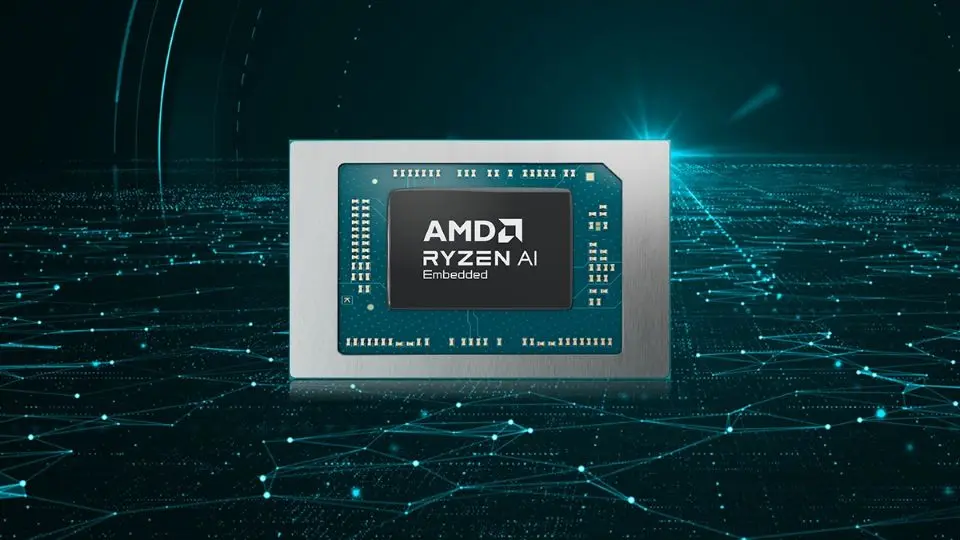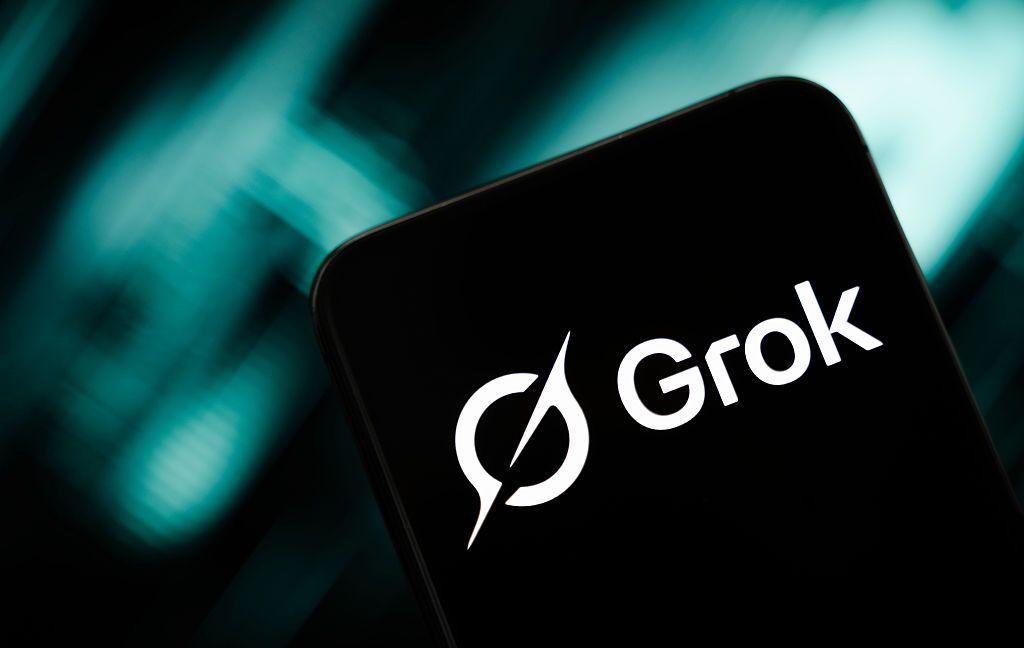AMD's Ryzen AI Max+ 395: A Powerhouse for AI Workloads in Consumer Laptops
8 Sources
8 Sources
[1]
AMD boasts its Ryzen AI Max+ 395 is up to 12.2x faster than Lunar Lake in AI workloads
AMD benchmarked the Ryzen AI Max+ 395 and Core Ultra 7 258V (with Arc 140V graphics) in a variety of large language models and LLM configurations, including DeepSeek R1 and Llama. Model sizes were restricted to 16GB to offer a fairer comparison against Lunar Lake-powered laptops with 32GB of memory (the highest memory configuration available for these devices). An Asus ROG Flow Z13 64GB was used for the Ryzen AI Max+ 395 test system, and an Asus Zenbook S14 32GB was used for the Core Ultra 7 258V test system. In DeepSeek R1, the Ryzen chip was up to 2.1x faster (measured in tokens per second) than the Intel counterpart using Distill Qwen 1.5b, up to 2.2x faster using Distill Qwen 7b; up to 2.1x faster using Distill Llama 8b; and up to 2.2x faster using Distill Qwen 14b. In Phi 4 Mini Instruct 3.8b, the Ryzen chip was up to 2.1x faster than the Intel Lunar Lake chip; up to 2.2x faster in Phi 4 14b; and up to 2.1x faster in Llama 3.2 3b Instruct. In the same LLM configurations but benchmarking the "time to the first token," the Ryzen AI Max+ 395 was up to 12.2x faster in DeepSeek R1 Distill Qwen 14b. The Zen 5 chip's least-performant dominance was in Phi 4 Mini Instruct 3.8b and Llama 3.2 3b Instruct, where the AMD chip was "only" 4x faster than the Core Ultra 7 258V. AMD showed similar dominance in AI vision models using the same "time to the first token" benchmarking technique. In IBM Granite Vision 3.2 2B, the 395 was up to 7x faster than the 258V, up to 4.6x faster in Google Gemma 3.4b, and up to 6x faster in Google Gemma 3 12b. AMD's benchmarks show complete dominance of its Ryzen AI Max+ 395 against the Core Ultra 7 258V in AI benchmarks. This is all thanks to the Ryzen AI Max CPU's significantly more powerful integrated graphics chip (which rivals discrete graphics with its 40 RDNA 3.5 CUs), eight more CPU cores, and its significantly higher configurable TDP (rated up to 120W). Even though it consumes significantly more power than the Core Ultra 7 258V (which has a max turbo power of 37W), both chips operate in the same market, and are compatible in the same thin-and-light category of laptop PCs. It will be interesting to see how the new AMD mobile APUs shape up against Nvidia's RTX 50-series mobile GPUs, which are reportedly facing supply chain issues, delaying their launch in upcoming RTX 50 series gaming laptops. On a pure performance level (not considering form factor), these new Nvidia-powered systems will be AMD's primary competition. AMD is allegedly well on its way to handling discrete GPU competition, as it already advertised superior AI performance on the Ryzen AI Max+ 395 against Nvidia's RTX 4090 laptop GPU.
[2]
The AMD Ryzen AI Max+ 395 dominates as the "most powerful" APU on the market, but its competition is questionable
Official benchmarks have backed up the "Strix Halo" AMD Ryzen AI Max+ 395's performance as the "most powerful x86 APU" on the market for AI computing. The AMD Ryzen AI Max+ 395 is a 16-core (32 threads) processor with a 50+ peak AI TOPS XDNA 2 NPU, and Radeon 8060S integrated graphics (40 RDNA 3.5 Compute Units) for some serious processing power for the form factor. It's being primarily marketed by AMD for its handling of AI workloads, such as in applications such as LM Studio. This is evident in AMD's published benchmarks for the Ryzen AI Max+ 395, which are measured in 'tokens per second' and 'time to first token' in LM Studio against its competition. Specifically, we see how the new "Strix Halo" processor inside of the Asus ROG Flow Z13 with 64GB RAM compares to a similar spec Asus Zenbook S14 with 32GB RAM. The latter machine has half the unified memory and is using the Intel Core Ultra 7 258V APU with its baked-in Arc integrated graphics clocked at 140V, so it's not necessarily a 1:1 comparison. However, AMD has showcased the prowess of its latest chipset in LM Studio 0.3.11 with "various LLMs" with a 16GB model size, demonstrating at least twice the effective tokens per second with DeepSeek R1, Phi 4 Mini Instruct, and Llama 3.2 compared to its rival. The lead becomes more dramatic when comparing time to first token in text models, with up to 12.2x faster as evidenced by the benchmarks in DeepSeek R1 Distill Qwen 14b, with a similar lead of 11.3x in Phi 4 14b. It's not a consistent lead across all text models, however, as the Ryzen AI Max+ 395 is anywhere from 4x to 9x faster in Llama 3.2 and other DeepSeek R1 distilled models. AMD's Ryzen AI Max+ 395 is also claimed to be up to seven times faster in SOTA vision models in the time to first token, this can be seen in IBM Granite Vision 3.2 2B while the chip is six times faster in Google Gemma 3 12b; it's roughly halved when comparing against Gema 3 4b, though. AMD's leading "Strix Point" APU is head and shoulders above the Intel Core Ultra 7 processor in a way that should not be surprising to those interested in AI computing. That's because Team Blue's hardware was made with lower threshold AI computing in mind, and this can be seen in the architectural differences when analyzing the two. The Intel Core Ultra 7 258V features eight cores and eight threads with a maximum boost clock of up to 4.8 GHz and a maximum TDP of 37W. In contrast, the AMD Ryzen AI Max+ 395 has 16 cores, 32 threads, a boost clock of up to 5.1 GHz, and a default TDP of 55W. However, this TDP is configurable up to 120W, so it's a night and day hardware difference in the chipsets. Of course, AMD's hardware was going to come out on top; it's far more powerful across the board. Then we have to consider the two tested machines used for the benchmarks, the differences between the Asus ROG Flow Z13 (a leading gaming laptop) and the Asus Zenbook S14 (a midrange ultrabook). We reviewed the latter device late last year giving it a four-star write-up, citing the "solid performance" from the Lunar Lake processor. The chip debuted inside this machine (and similar) back in September 2024, while the AMD Ryzen™ AI Max+ 395 hit the scene this month. It's not just AI laptops that are using the flagship Ryzen AI chipset for its performance capabilities as a myriad of mini PCs are using them for productivity and even gaming use. It's become a race to launch the most powerful AI mini PCs possible as mid-March to mid-May are targeted from companies, such as GMKTec and Aoostar, which are leading the charge.
[3]
We compared AMD's Ryzen AI Max+ 395 to Apple's M4 Pro and the results might surprise you
The Ryzen AI Max "Strix Halo" is a powerful chip, there's no doubt, but recent benchmarks don't tell the whole story Laptop Mag loves a good benchmark comparison, especially when a product eclipses the competition, but not every comparison is a fair one. The problem is those benchmark charts only focus on the AMD and Intel rivalry, leaving out the far more pressing Apple competition. So, for a more fair comparison, we went ahead and did the hard comparison work for you. Rather than use standardized industry benchmarks, AMD's comparisons use a "tokens per second" speed rating on how Lunar Lake and Strix Halo handle various Large Language Model (LLM) and Small Language Model (SLM) AI frameworks like DeepSeek and Microsoft's Phi 4. As you might expect, the robust GPU tile on the Ryzen AI Max+ 395 outperforms Lunar Lake's smaller Intel Arc 140V integrated graphics. After all, Intel's Lunar Lake chips were designed for ultra-portable AI PC laptops and operate at a much lower power threshold than the Ryzen AI Max+. Additionally, no one expects the same GPU performance from an ultra-thin notebook as they do from a gaming machine like the Flow Z13. True, the AMD Ryzen AI Max+ 395 and Intel Core Ultra 200V series are both x86 CPUs that can handle AI workloads. Comparing AI power on the Zenbook S14 and the ROG Flow Z13 is a lot like comparing the gaming performance of the Asus ROG Ally X to the ROG Strix Scar 18. They're completely different devices, with different hardware, designed for different uses. Plus, AMD already has a Lunar Lake competitor in the Strix Point and Krackan Point Ryzen AI 300 series. Since AMD's performance benchmarks don't use standardized tests or report hard score numbers, we checked AMD's findings with our own lab benchmarks. AMD titled the AI performance benchmarks "Most Powerful x86 processor for LLMs" and that is true. But Strix Halo isn't a standard mobile CPU design. It has more in common with Apple's Arm-based M4 Max or M3 Ultra. While that is an x86 vs Arm comparison, Apple's high-end chipsets are in a similar CPU class as the Ryzen AI Max, whereas Lunar Lake just isn't. While we don't have benchmarks for the M4 Max or M3 Ultra yet, we do have testing results from the "most powerful Apple laptop we've ever tested," the MacBook Pro 16 with the M4 Pro chipset. Of course, for a proper chip and product comparison, the other launch system for the Ryzen AI Max APU would have been a better choice for facing off with the MacBook Pro. Apple's premium laptops have long been a standard for design professionals, and so the HP ZBook 14 Ultra would have been a fantastic test to run against the MacBook Pro 16. Unfortunately, we haven't been able to test the ZBook 14 Ultra G1a just yet. So we had to use the Flow Z13 instead. We kept the Intel Core Ultra 7 258V-powered Asus Zenbook S14 in the comparison to verify AMD's claims, and we weren't really surprised to see the Zenbook S14 on the low end compared to the Apple and AMD powerhouses. While the Ryzen AI Max+ 395 in the ROG Flow Z13 does have the edge on gaming performance, the M4 Pro does give it some solid competition on GPU-bound AI performance, based on the Geekbench AI benchmark. While the Geekbench AI benchmark does have its own drawbacks in measuring AI performance, it is a cross-platform benchmark designed to compare CPUs and GPUs where AMD's reported "Tokens per second" benchmarks are a bit more difficult to repeat in outside testing. Just because the Apple MacBook Pro 16 offers solid competition to the Flow Z13 in our benchmarks, it doesn't mean the Ryzen AI Max+ 395 isn't a massively powerful chipset. It's a heavy-hitting, multi-purpose chip that we've seen crush creative and gaming performance. It's a new take on the x86 processor design. And it was our Best-in-Show winner for CES 2025 for good reason. We loved seeing its power in the ROG Flow Z13, and we're excited to get our hands on the PRO-version in the HP ZBook 14 Ultra. We'd also love to see AMD put the Ryzen AI Max in more systems, so we have more points of benchmark comparison. After all, Apple Silicon could always use stronger competition.
[4]
AMD Launches 'Powerful' Consumer-Grade Processor for LLMs
AMD is trying to make it easy for consumers to run LLMs on their laptops. American chip maker AMD announced a new processor on Tuesday for consumer laptops to run LLMs efficiently. AMD Ryzen AI Max+ 395 is the most powerful x86 APU currently on the market and delivers a significant performance boost over the competition, the company claimed. The processor is powered by 16 "Zen 5" CPU cores, 50 peak AI TOPS XDNA 2 NPU and an integrated GPU powered by 40 AMD RDNA 3.5 CUs. It has system memory options ranging from 32 GB to 128 GB of unified memory. 96 GB of it can be converted to VRAM through AMD Variable Graphics Memory. AMD stated that the processor excels in consumer AI workloads like the llama.cpp-powered application: LM Studio, and is a significant upgrade for thin and light devices. To demonstrate the performance capabilities, AMD used the ASUS ROG Flow Z13 laptop with 64 GB of unified memory. AMD claims the processor is up to 4x faster than the competition in time-to-first token benchmarks when using smaller models like Llama 3.2 3b Instruct. When considering 7/8 billion parameter models like DeepSeek R1 Distill Qwen 7b and 14 billion models, the ASUS laptop is up to 9.1x and 12.2x faster, respectively. The company shared benchmarks with vision models and claimed that the Ryzen AI Max+ 395 processor is up to 7x faster in IBM Granite Vision 3.2 3b, up to 4.6x faster in Google Gemma 3 4b, and up to 6x faster in Google Gemma 3 12b. One can see the processor running the Google Gemma 3 27B Vision model in the official demo: In addition to the new processor, AMD highlighted EPYC CPUs benchmarks that outperformed Nvidia's Grace Superchip for enterprise AI use cases. The company also announced on Monday that AMD Versal AI Edge XQRVE2302 SoC is their second flight-qualified device, which is available to order.
[5]
Ryzen AI MAX+ 395 Technical Overview: Zen 5 Cores and XDNA 2 AI NPU
AMD's new Ryzen AI MAX+ 395 processor, nicknamed "Strix Halo," has recently shown impressive AI performance improvements over Intel's "Lunar Lake" chips. This chip has 16 Zen 5 CPU cores, 40 RDNA 3.5 GPU units, and features an advanced XDNA 2 AI unit with a power rating over 50 AI TOPS. Benchmarks show that in complex language tasks (LLM inference), it performed up to 12.2 times better than Intel's Core Ultra 258V, which has half as many cores. The performance gap really grows with bigger models that usually push the memory limits of typical laptops. Testing with an ASUS ROG Flow Z13 laptop loaded with 64 GB of memory showed the Ryzen AI MAX+ 395's integrated Radeon 8060S GPU delivered 2.2 times more throughput than Intel's Arc 140V GPU. For response speed ("time-to-first-token"), AMD's chip showed clear advantages: up to 4 times quicker on small models and more than 9 times faster for larger ones. It also shined in visual-heavy AI tasks, handling graphics-intensive models significantly faster than Intel's chips. For gurus working with huge AI models, AMD's Variable Graphics Memory technology lets systems with lots of memory (like 128 GB) assign up to 96 GB specifically as VRAM. This is especially helpful when dealing with extremely large models or demanding tasks like medical imaging or software coding, where accuracy and performance really matter. Source: AMD Blog
[6]
AMD's new Ryzen AI Max+ 395 'Strix Halo' APU is 3x faster in DeepSeek R1 AI bench than RTX 5080
TL;DR: AMD's Ryzen AI Max+ 395 "Strix Halo" APU outperforms NVIDIA's RTX 5080 in AI benchmarks, offering up to 3x faster performance. AMD's new Ryzen AI Max+ 395 "Strix Halo" APU has been tested in DeepSeek R1 with some impressive results, with the AI benchmark running up to 3x faster than NVIDIA's discrete GeForce RTX 5080 graphics card. First off, the major difference between the two is that the RTX 5080 has 16GB of VRAM and the Strix Halo APU has up to 128GB of VRAM at its disposal, as well as combining a 16-core, 32-thread Zen 5-based processor with 50 TOPS of AI workload performance with its XDNA 2-based NPU. AMD ran some benchmarks using consumer AI workloads including llama.cpp-powered application, LM Studio, which is shaping up to be the ultimate support for client LLM workloads, allowing users to locally run the latest language model without any technical knowledge required. The second that the LLM uses more than 16GB of VRAM, that's when the silicon prowess of the Ryzen AI Max+ 395 "Strix Halo" APU and its 128GB of VRAM comes into play: up to 3.05x the performance compared to a discrete GPU that has less than 16GB of VRAM. NVIDIA's more expensive GeForce RTX 5090 and its 32GB of VRAM doesn't hold a candle to the far larger pool of 128GB VRAM available on the Strix Halo APU. Key AMD Ryzen AI MAX+ 395 Advantages Over Copilot+ Competitors: Performance
[7]
Bye Nvidia: AMD just launched the best x86 AI APU
The AMD Ryzen AI Max+ 395 has been established as the "most powerful x86 APU" on the market for AI computing, according to official benchmarks. The processor features a 16-core architecture with 32 threads, delivering a peak AI performance of over 50 AI TOPS via its XDNA 2 NPU. Additionally, it integrates Radeon 8060S graphics with 40 RDNA 3.5 Compute Units, making it particularly adept at handling AI workloads, including those in applications like LM Studio. AMD Ryzen AI Max+ 395: The most powerful x86 APU for AI computing AMD's published benchmarks for the Ryzen AI Max+ 395 highlight its performance in terms of 'tokens per second' and 'time to first token' within LM Studio, comparing it directly to competitors. AMD stock rises 4% as it claims 45% of Japan's GPU market: Buy or sell? Notably, the Ryzen AI Max+ 395, housed in the Asus ROG Flow Z13 with 64GB RAM, was measured against an Asus Zenbook S14, which has 32GB RAM and utilizes the Intel Core Ultra 7 258V APU along with its Arc integrated graphics. AMD's chipset demonstrated at least double the effective tokens per second in various large language models compared to its rival, such as DeepSeek R1, Phi 4 Mini Instruct, and Llama 3.2. The differences in performance are pronounced when evaluating time to first token in text models. The Ryzen AI Max+ 395 showed performance boosts of up to 12.2 times faster in the DeepSeek R1 Distill Qwen 14b model, and a similar advantage of 11.3 times in Phi 4 14b. It varied from 4x to 9x faster in Llama 3.2 and other distilled models from DeepSeek R1. In vision models, the Ryzen AI Max+ 395 is reportedly up to seven times quicker in terms of time to first token, exemplified by its performance in IBM Granite Vision 3.2 2B. The processor also exhibited a six-fold increase in speed when compared to Google Gemma 3 12b, though performance halved against Gemma 3 4b. Comparative analysis with Intel's APU The architectural differences between AMD and its competitor Intel clarify the performance gap. The Intel Core Ultra 7 258V is an eight-core, eight-thread processor with a maximum boost clock of 4.8 GHz and a thermal design power (TDP) of 37W. Conversely, the Ryzen AI Max+ 395 boasts 16 cores, 32 threads, a boost clock reaching 5.1 GHz, and a default TDP of 55W, configurable up to 120W, which exemplifies a significant disparity in hardware capability. The benchmark results are also influenced by the differences in the tested devices: the high-performance Asus ROG Flow Z13 gaming laptop compared to the midrange Asus Zenbook S14 ultrabook, which received a four-star review for its solid performance with the Lunar Lake processor, released in September 2024. The AMD Ryzen AI Max+ 395 was recently launched in March 2025. Beyond laptops, the Ryzen AI Max+ 395 is being adopted in various mini PCs targeting productivity and gaming applications. Companies like GMKTec and Aoostar are racing to launch powerful AI-oriented mini PCs, with releases anticipated from mid-March to mid-May.
[8]
AMD's Ryzen AI MAX+ 395 "Strix Halo" APU Is Over 3x Faster Than RTX 5080 In DeepSeek R1 AI Benchmarks
AMD has showcased its Ryzen AI MAX+ 395 "Strix Halo" APU offering over 3x the boost over RTX 5080 in DeepSeek R1 AI benchmarks. Press Release: The new Ryzen AI MAX+ 395 represents a significant leap in AI processing capabilities for consumer laptops. The processor combines Zen 5 CPU cores with a 50 TOPS XDNA 2 NPU and integrated GPU, offering unprecedented AI performance for premium thin and light devices. It demonstrates remarkable improvements in running local AI models, specifically in LLM applications, with significant performance advantages over competitors. This processor excels in consumer AI workloads like llama.cpp-powered application, LM Studio, which is shaping up to be the ultimate support for client LLM workloads, allowing users to locally run the latest language model without any technical knowledge required. Key AMD Ryzen AI MAX+ 395 Advantages Over Copilot+ Competitors: [Editor's Note] In the latest benchmarks, AMD is showcasing the AI performance capabilities of its Strix Halo APUs against NVIDIA's latest Blackwell GPUs. The company is telling us the benefits of its large 128 GB VRAM on the Ryzen AI MAX+ 395 APU, which can offer up to 3.05x performance boost versus the discrete graphics card as soon as the LLM model sizes exceed 16 GB VRAM. That is because the Strix Halo APUs can be associated with the full 128 GB VRAM, while the discrete RTX 5080 GPU is limited to 16 GB VRAM. Even the higher-end RTX 5090 features 32 GB VRAM but consumes more power, 360W in the case of the 5080 and 575W in the case of the RTX 5090. In model sizes that are within the VRAM budget of the RTX 5080 and RTX 5090 GPUs, performance is still stronger on RTX 50 discrete solutions, but Strix Halo still retains a very strong position as an integrated AIO solution.
Share
Share
Copy Link
AMD launches the Ryzen AI Max+ 395 processor, showcasing significant performance improvements in AI workloads compared to Intel's offerings, particularly in running large language models on consumer laptops.

AMD Unveils Ryzen AI Max+ 395: A New Frontier in Consumer AI Processing
AMD has introduced its latest processor, the Ryzen AI Max+ 395, codenamed "Strix Halo," positioning it as a game-changer for AI workloads in consumer laptops. This new chip boasts impressive specifications and performance metrics, particularly in handling large language models (LLMs) and AI tasks
1
2
.Technical Specifications and Architecture
The Ryzen AI Max+ 395 is built on AMD's advanced architecture, featuring:
- 16 "Zen 5" CPU cores
- 40 AMD RDNA 3.5 Compute Units for integrated graphics
- An XDNA 2 AI NPU (Neural Processing Unit) delivering over 50 peak AI TOPS
- Support for up to 128GB of unified memory, with AMD Variable Graphics Memory technology allowing up to 96GB to be allocated as VRAM
5
This combination of high-performance CPU cores, powerful integrated graphics, and dedicated AI hardware positions the Ryzen AI Max+ 395 as a versatile chip for both general computing and AI-specific tasks
4
.Benchmark Performance
AMD's benchmarks, conducted using an ASUS ROG Flow Z13 laptop with 64GB of unified memory, showcase the Ryzen AI Max+ 395's capabilities:
- Up to 2.2x faster in tokens per second for various LLM configurations compared to Intel's Core Ultra 7 258V
- Up to 12.2x faster in "time to first token" benchmarks for larger language models
- Up to 7x faster in AI vision models like IBM Granite Vision 3.2 2B
1
3
These results demonstrate significant performance advantages, especially in handling larger AI models that typically strain the memory limits of conventional laptops
5
.Competitive Landscape
While AMD's benchmarks primarily focus on comparisons with Intel's Lunar Lake chips, particularly the Core Ultra 7 258V, some analysts suggest this may not be an entirely fair comparison due to differences in power consumption and target markets
2
3
.The Ryzen AI Max+ 395 operates at a higher power threshold (configurable up to 120W) compared to Intel's ultra-portable focused Lunar Lake chips (max 37W). This allows for greater performance but in potentially different form factors
1
2
.Some experts argue that a more apt comparison might be with high-end Apple Silicon chips like the M4 Pro or M3 Ultra, which are in a similar performance class
3
.Related Stories
Implications for Consumer AI
The introduction of the Ryzen AI Max+ 395 signifies a push towards making AI workloads, particularly LLM inference, more accessible on consumer devices. This could enable more powerful on-device AI applications, reducing reliance on cloud services for certain tasks
4
.AMD's focus on supporting larger memory configurations and the ability to allocate substantial VRAM through their Variable Graphics Memory technology could be particularly beneficial for professionals working with demanding AI models in fields like medical imaging or software development
5
.Future Outlook
As AMD continues to expand the availability of the Ryzen AI Max+ 395 in various laptop models and potentially mini PCs, it will be interesting to see how this impacts the consumer AI landscape. The competition between x86 processors from AMD and Intel, as well as Arm-based chips from Apple, is likely to drive further innovation in this space
2
3
.The introduction of such powerful AI-capable processors in consumer devices could accelerate the adoption of AI applications and potentially reshape how users interact with their personal computers in the near future.
References
Summarized by
Navi
[1]
[2]
[3]
Related Stories
AMD Unveils AI-Optimized Processors at CES 2025, Advancing AI PC Market
01 Jan 2025•Technology

AMD's Ryzen AI 300 Series Outperforms Intel in LLM Performance Benchmarks
31 Oct 2024•Technology

AMD unveils Ryzen AI 400 Series with 60 TOPS, challenging Intel and Qualcomm in AI PC race
06 Jan 2026•Technology

Recent Highlights
1
Grok generates sexualized images of minors and women as X blames users, not the AI model
Policy and Regulation

2
Nvidia launches Vera Rubin platform at CES 2026, promising 10x cost reduction for AI computing
Technology

3
OpenAI launches ChatGPT Health as 230 million users seek AI-generated health advice each week
Technology





